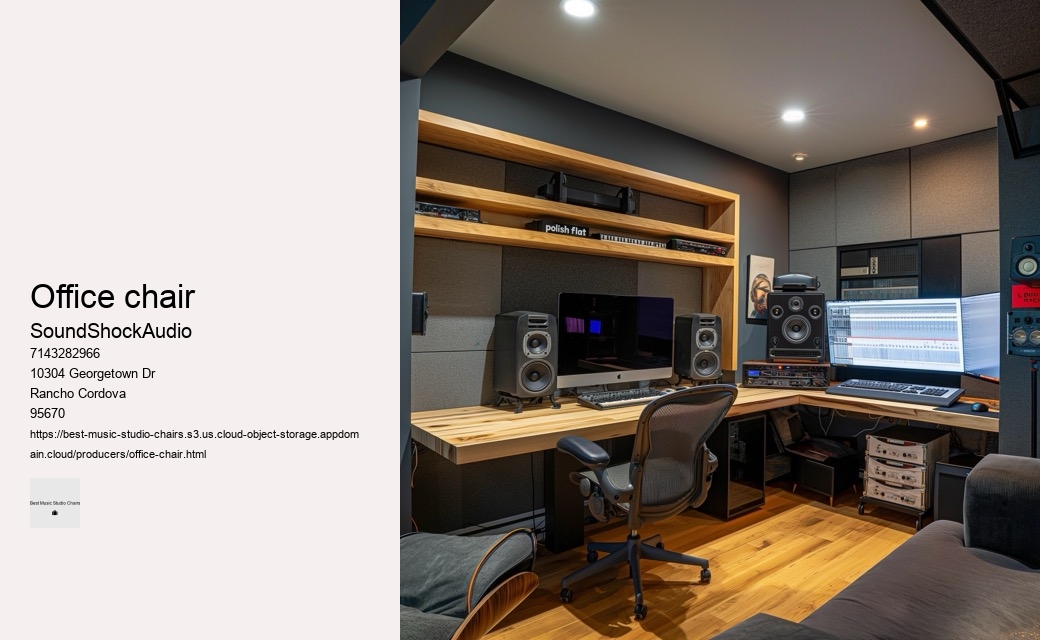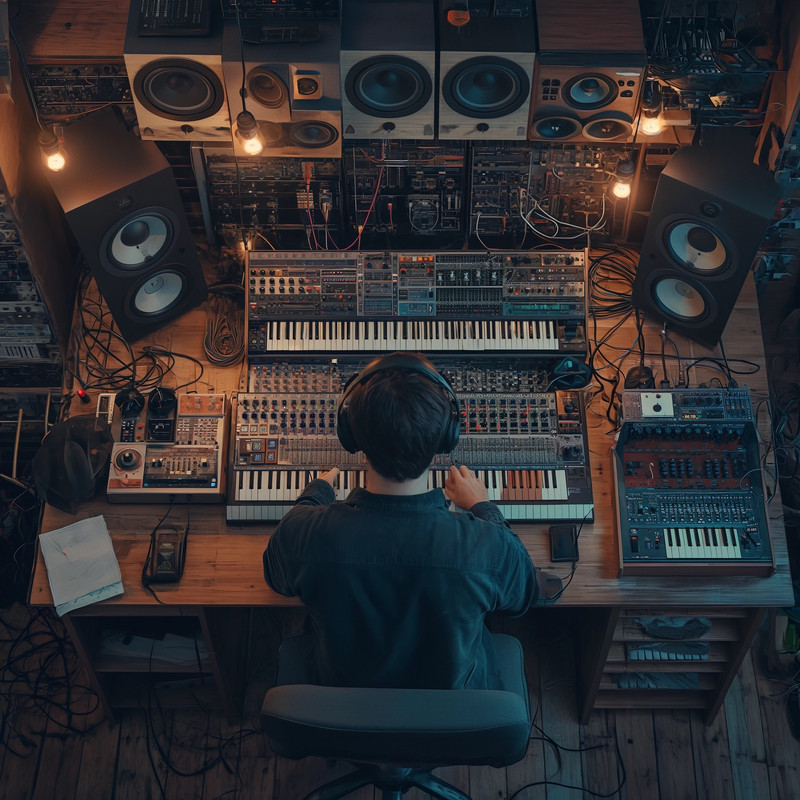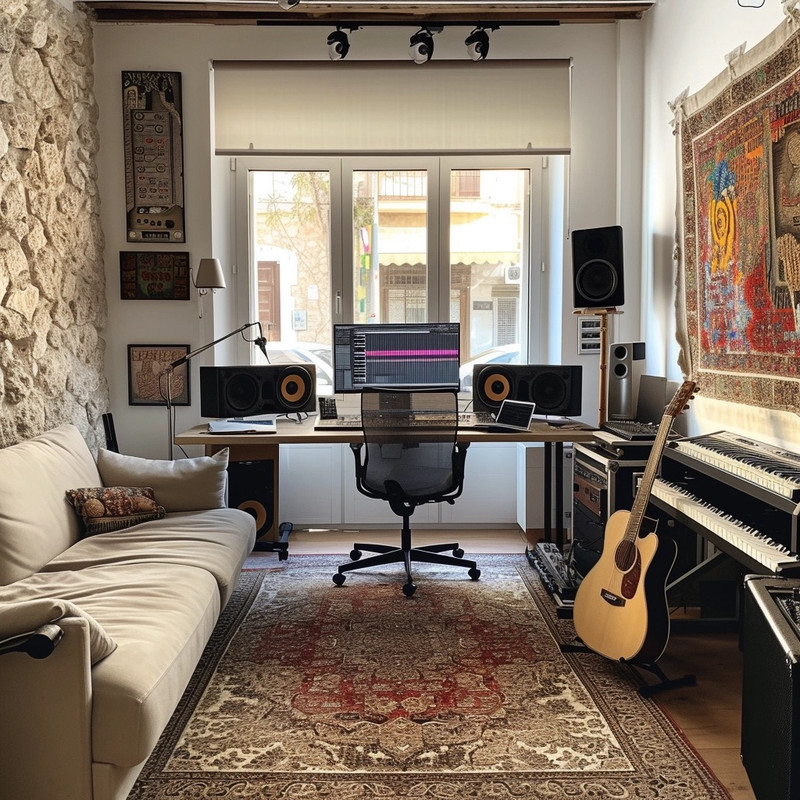

This visual harmony creates an ambiance conducive to uninhibited expression. In selecting such a throne of thoughtfulness, one must prioritize features that may initially seem inconsequential yet play pivotal roles in sustaining creative flow. Firstly, let's address the elephant in the room - not all chairs are created equal when it comes to prolonged sitting. Another key element contributing to its comfort is its environmentally conscious construction. However, ensure the casters are tuned to your floor type; carpet demands different wheels than hardwood.
Incorporating standing desks or sit-stand workstations into one’s environment offers another layer of protection against the perils of sedentary behavior. Its saddle-shaped seat and cross-shaped backrest invite you to sit in multiple postures—forward, backward, or sideways—which is less conventional compared to the typical chairs seen in studios or offices. Thirdly, mobility within the workspace enhances efficiency and keeps creative juices flowing. Now let us muse upon aesthetics—the visual poetry of your workspace can greatly influence creative mood and output.
Beneath this marvel lies a foundation sturdy yet silent: wheels glide across studio floors as if skating on ice untouched by Zamboni's grace. Setting aside time for short breaks where you stand up, stretch out or walk around is crucial for maintaining back health over longer stretches of time. Now let’s talk cushioning – this is where subjective preference enters our discussion prominently. A key element in maintaining focus and inspiration throughout these sessions is the chair you choose to sit in.
Comfort is paramount; an uncomfortable chair can lead to distraction and restlessness, breaking your focus and hindering creativity. While not as advanced as some higher-end models, its simple design coupled with decent build quality makes it suitable for less intense studio environments. Top producers often find themselves glued to their workstations for extended periods, diving deep into the intricacies of mixing and mastering. A headrest promises solace to minds burdened with chords and melodies seeking escape into audial realms.
Unveiling this paragon of comfort, we encounter a masterpiece that seamlessly integrates aesthetic appeal with practical features. Materials play a significant role in this balancing act. Enter dynamic ergonomics: this innovative concept refers to chairs that adapt in real-time to the user's body. Ultimately, the choice between economy versus luxury comes down to balancing short-term savings against potential long-term gains in healthful ease and professional output. The chair you select for endless hours in the studio is not merely a seat; it becomes your command center, a throne from which you orchestrate audio masterpieces.
This evolution symbolizes a broader shift towards recognizing the importance of human-centric design—not merely as an afterthought but as a fundamental consideration shaping how tools enhance our abilities rather than impose limitations upon them. Once upon a twilight hue, artisans of rhythm embarked on quests for perfect perches. This decision is not merely about comfort; it also encompasses health considerations and productivity implications. This exploration reveals the best studio chairs, ensuring your experience is unmatched in support and ease throughout editing or any task requiring prolonged sitting.
Firstly, ergonomics play a pivotal role. This increases efficiency as you reach for different pieces of equipment or instruments during your session. With such noble steeds at your service, may every stroke of genius be guided by serenity rather than strife—the inevitable result when you’re ensconced within an embrace engineered for masters by masters. Chairs without this fundamental adjustment could lead to discomfort and health issues over time.
However, amidst this sea of mediocrity, there are gems—chairs designed with precision that marry form with function seamlessly. However, incorporating this functionality without compromising on style requires an innovative approach—melding practicality with elegance. Its innovative backrest aligns seamlessly with the spine's natural curve, promoting an upright position without strain. Yet delve deeper into its design elements, and you'll find that each curve, texture, and material choice speaks volumes about the ethos it carries.
Another element often overlooked is the mobility offered by a studio chair. Music production often involves dynamic body movements—reaching for that high note on a keyboard or pivoting swiftly from one piece of gear to another—and your chair must withstand constant use without losing its form or function. Moreover, time equals money in any production environment - be it music, video editing, or graphic design - and efficiency is king.
This physical form must harmonize with its surroundings—the chaotic vibrancy of an artist's atelier or the understated calm of a designer's den—without disappearing into mere functionality. Balance cost against features; investing in a quality chair can save you from future back concertos (the painful kind) down the road.
Each cushion whispers secrets of cloud-like serenity to weary backs bent over mixing consoles. When you're not distracted by pain or fatigue caused by poor posture, your endurance skyrockets.
By prioritizing ergonomics, you encourage a healthier sitting position that allows for better blood flow and reduced muscle tension. Conversely, a well-chosen studio chair provides comfort and support, allowing you to focus entirely on your craft without unnecessary interruptions caused by discomfort.


When embarking on this journey, comfort reigns supreme. When hours stretch into marathons of focused work, a reliable studio chair is not merely furniture; it transforms into a steadfast companion. Therefore, it becomes imperative for musicians to find seating that resonates with their body's needs as much as they resonate with their music.
In conclusion, while there might not be a universally acclaimed 'top-rated' chair due to individual preferences and needs varying greatly amongst musicians, chairs that prioritize ergonomics and posture like the Harmony ErgoTune Supreme are highly regarded in musical circles. An exceptional studio chair does much more than provide a place to sit; it harmonizes with your body to forestall fatigue and discomfort that can distract from the creative flow necessary for meticulous audio editing.
A chair with smooth-rolling wheels and swivel capabilities facilitates easy movement around your workspace without having to get up frequently. These less probable options highlight by contrast what makes certain choices superior when selecting an optimal studio chair.
In conclusion, acknowledging the profound impact that proper seating has on preventing fatigue and injury is paramount for maintaining overall well-being. Their chairs are silent partners in this symphony of skill, providing a foundation upon which their artistry can flourish. These adjustments allow you to maintain a healthy posture, reducing strain on your back, neck, and shoulders.
This will create a quirky and unusual text that maintains the essence of the topic but with a twist.---When we delve into the realm of studio furniture, particularly chairs designed for music producers, durability stands as a paramount attribute. Spending hours on end in a studio requires a seat that offers unparalleled comfort and support to prevent fatigue and keep you focused on your craft.
Such knowledge empowers individuals with strategies for self-care which ultimately leads to healthier lifestyles both inside and outside the workplace. While such chairs command a premium price tag, they represent an investment in one's health and efficiency.
Lastly, don't underestimate personal preference's role—testing different chairs until you find 'the one' is crucial since everyone's definition of comfort varies widely. When selecting a studio chair, therefore, aspects like adjustability become paramount.

Prioritizing ergonomics and comfort ensures that you can endure those marathon sessions without sacrificing your physical or mental well-being — allowing creativity to flow unhindered by bodily distractions. This position reduces pressure on the lower back and aids circulation. Moreover, taking short but frequent breaks from sitting can help reset one’s posture and reduce the likelihood of fatigue.
Top-tier studio chairs are engineered utilizing robust materials such as reinforced aluminum frames and resilient mesh or leather upholstery. Consider also mobility; a chair with smooth-rolling casters will let you glide effortlessly from one end of your workspace to another—a tangible metaphor for seamless thought transitions from concept to execution.
Fourthly, durability is crucial since studio chairs are used extensively. Ultimately, aesthetics hold peculiar significance; after all, this chair sits at the heart of creativity's temple—the studio—and its design must inspire.
However, practicality reigns supreme in reality. When discomfort is absent from our seating experience, we can immerse ourselves fully in creative tasks without distraction — an invaluable benefit for anyone dedicated to their craft.
Finally, while budget considerations may play second fiddle in this selection concerto, they cannot be ignored completely. Among these titans of seating, one finds lumbar supports singing in harmony with spines bent over mixing consoles. Initially, one must acknowledge that ergonomics transcends simple cushioning. Moreover, adjustability plays a crucial role in tailoring your sitting experience to perfection. Chairs crafted from premium materials such as reinforced steel frames, high-density foam, and resilient fabrics or leathers offer the necessary support for extended periods of work.
Comfort is subjective; what may feel like sitting on a cloud for one person could be unsupportive for another. Also essential is considering the aesthetic appeal of the chair; after all, it becomes part of your creative space's ambiance. Imagine a chair that doesn't merely exist within the studio but integrates seamlessly into the producer’s workflow. The right studio chair can significantly enhance your productivity and overall experience as you craft your musical masterpieces.
What sets it apart further is its environmentally conscious construction. It would provide incomparable support to the spine with a backrest that contours naturally to the body's curvature, ensuring those marathon mixing sessions don't take a toll on physical wellbeing. A comfortable chair contributes positively to our focus and efficiency. Adjustable in every sense, from armrest height to lumbar support tension, this chair adapts to you rather than demanding your adaptation to it. herman miller aeron chair
It remains unnamed here due largely to whimsy imposed by our linguistic constraints—the name deemed too likely for inclusion amid these peculiar prose edicts—yet those who have experienced its transformative embrace know well its moniker etched within halls where music breathes life into silence. As creators and artisans of the digital world, we often overlook the profound impact that our physical workspace can have on our productivity. Selecting the perfect studio chair is akin to composing a harmonious melody; it requires attention to both comfort and style, ensuring that each element resonates with your personal preferences and workspace needs. Choosing the perfect studio chair may seem trivial, but it's an essential factor for professionals who spend countless hours refining their craft.
The best chairs for long hours are ergonomic office chairs designed to support proper posture and reduce strain on the body. Models like the Herman Miller Aeron and the Steelcase Leap are highly regarded for their adjustable features, lumbar support, and overall comfort. These chairs are specifically engineered to cater to a wide range of body types and work environments, making them ideal for prolonged periods of sitting.
The chairs that actors sit in on set are commonly referred to as "director's chairs." These chairs are typically made of a lightweight frame with a canvas seat and backrest, and they often feature the name of the actor or director along with the movie or TV show logo. Director's chairs are designed to be easily foldable and portable, making them convenient for use on various locations during film and television productions.
The highest paying job in the music industry varies depending on factors such as experience, location, and market demand. However, roles such as Film Composer, Music Producer, and Concert Tour Manager are among the top-paying positions. These professionals can earn significantly high incomes, especially when working with top-tier artists or on major projects, with some earning in the six to seven-figure range annually.
The Aeron chair, designed by Herman Miller, is often considered worth the investment due to its high-quality construction, ergonomic design, and durability. It is specifically designed to support a wide range of body types and work styles, promoting better posture and comfort during long periods of sitting. Additionally, its warranty and the brand's reputation for customer service add value to the purchase. However, whether it is worth it ultimately depends on an individual's budget, personal preferences, and how much time they spend sitting.
The most successful "Shark Tank" item to date is the Scrub Daddy, a versatile and texture-changing household sponge that becomes firm in cold water and soft in warm water. Since its appearance on the show in 2012, Scrub Daddy has generated over $200 million in sales, making it the biggest success story in "Shark Tank" history. Its inventor, Aaron Krause, secured a deal with Lori Greiner, and the product has since expanded its line to include various cleaning tools and accessories.